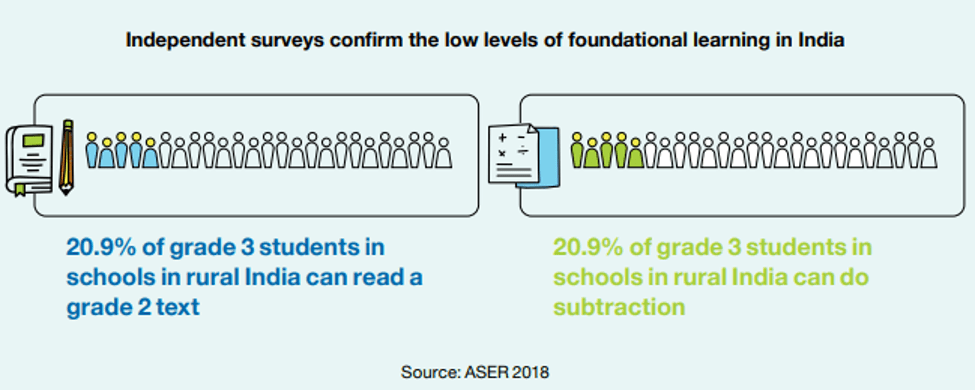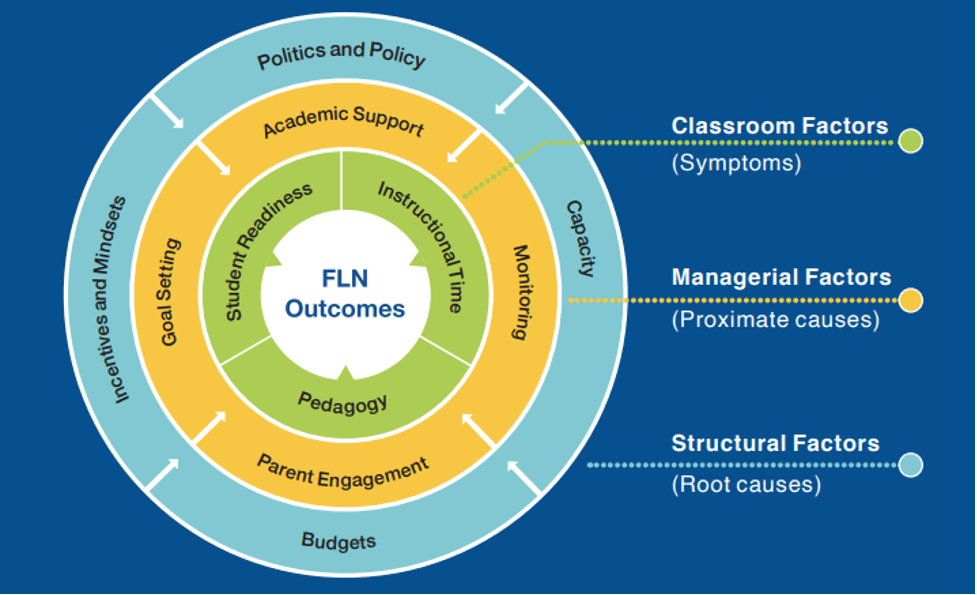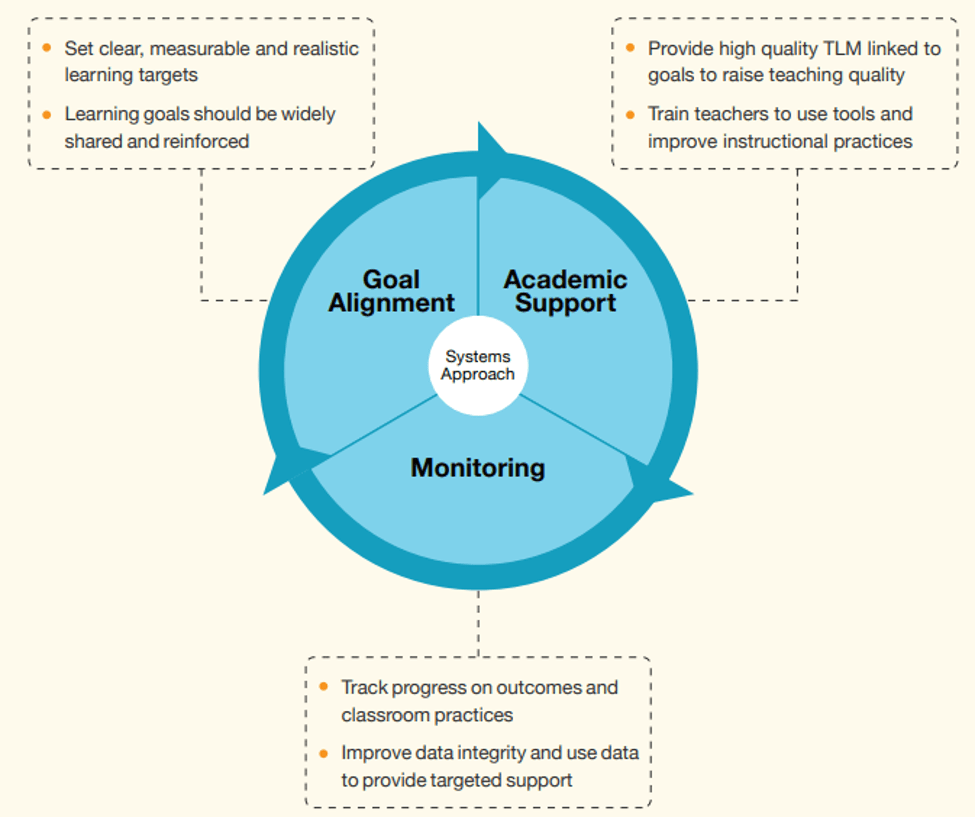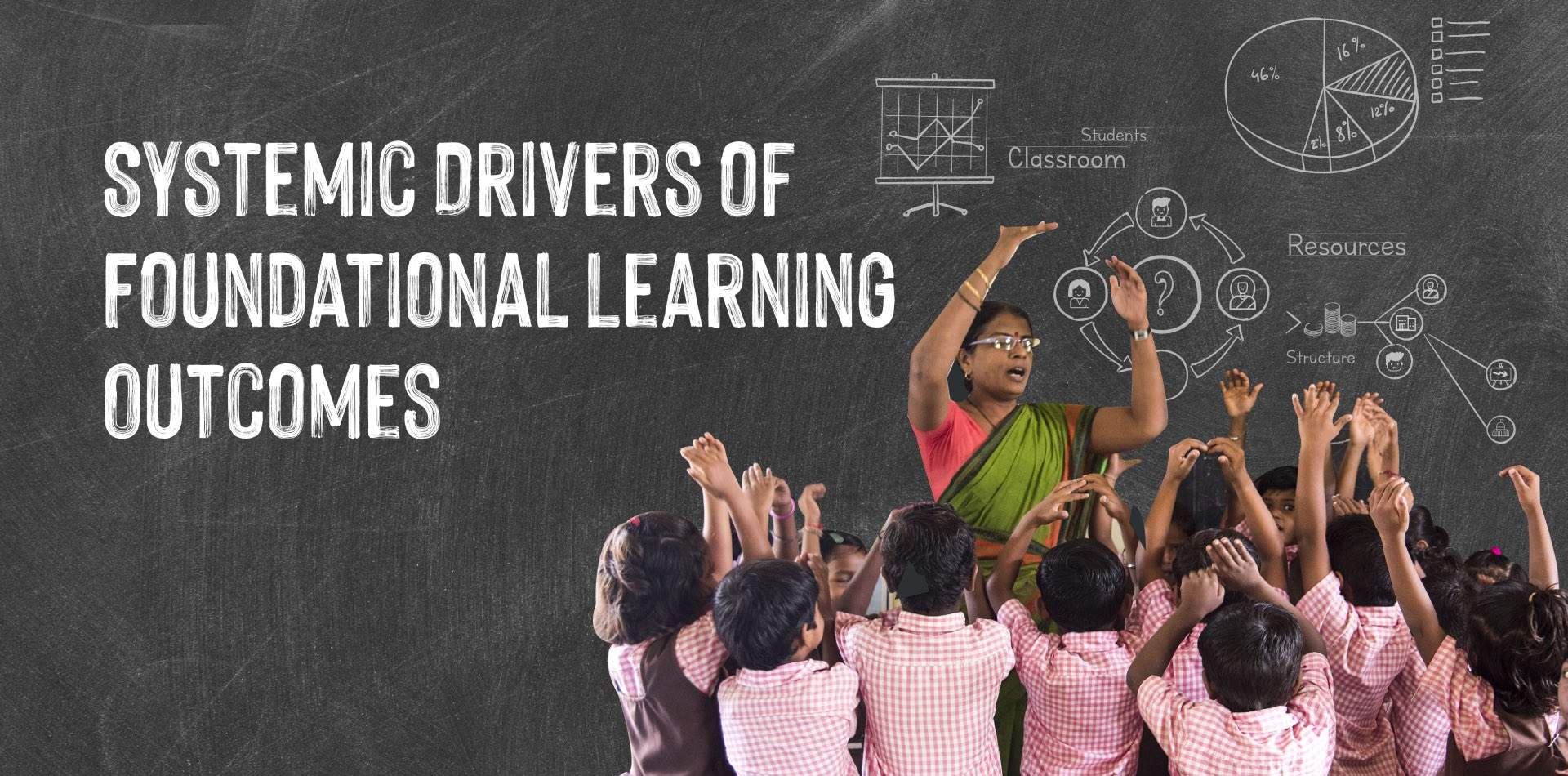India has the largest school education system in the world with 25 crore children enrolled in 15 lakh schools. We have achieved near universal enrollment of children at the primary level, with half of all school-going children in primary grades. However, schooling hasn’t necessarily translated to learning — almost 80% of grade 3 students in rural India cannot read a grade 2 text or solve basic subtraction problems (ASER 2018). Improving Foundational Literacy and Numeracy (FLN) levels, i.e children’s ability to read with meaning and solve basic mathematical problems by grade 3, is critical as these skills are prerequisites for learning in higher grades.

Central Square Foundation recently released a report on ‘Systemic Drivers of Foundational Learning Outcomes’ to understand what are some of the key factors that drive FLN outcomes[1] and where are the shortfalls in delivering them. The report is based on primary research including interviews and observations of nearly 700 stakeholders across five large Indian states. It also captures insights from a comprehensive literature review. The report can help build a common understanding among all stakeholders of how we can collectively work towards improving FLN outcomes.
Read the Report: Systemic Drivers of Foundational Learning Outcomes
Why are foundational learning levels low?
Our report documents how a set of interdependent factors operating at three levels- Classroom, Managerial, and Structural – lead to low FLN outcomes (as represented by each of the concentric circles in the figure 2 below).
At the classroom level, breakdowns that are visible include ineffective teaching and inadequate instructional time. Focusing on these issues alone will not move the needle on outcomes because they are a manifestation of a deeper problem.
Our administrative and managerial systems prioritise tangible inputs like infrastructure and compliance with rules over the (invisible) learning outcomes among children. This lack of focus on improving learning outcomes is a deep-seated structural problem which currently defines our policies, incentives and mindsets. While each of these levels need attention, we recommend that the education systems intervene at the managerial level because that is where evidence suggests the greatest improvement in FLN outcomes is possible.

In our classrooms: teaching practices do not enable acquisition of FLN skills
The grade 1 curriculum requires children to possess certain pre-literacy and numeracy skills for them to be able to follow what is taught in the classroom. However, over 57% of students are not ready for grade 1[2] when they enter school. This is made worse by the fact that about 45% of the instructional time is lost every year as teachers are either absent, busy with non-teaching duties, or teaching multigrade classrooms. This affects the pace and depth of learning in classrooms. Even when teachers are present, the emphasis on rote learning in the classroom leaves students disengaged and unable to gain basic literacy and numeracy skills.
70% of teaching time in classrooms is spent on traditional teaching and rote pedagogy[3]
In managing schools: FLN is not a goal; there is limited support to deliver and monitor it
Even where learning outcomes are defined, most stakeholders in the system do not share a common understanding of what children are expected to learn by grade 3. Our monitoring systems are geared to focus on measuring and tracking inputs and processes[4], instead of learning outcomes. When officials visit schools, they look at whether the syllabus has been completed on time[5] or if registers are maintained, instead of tracking how much children have learned. In the rare instances where student learning outcomes data is monitored in early grades, the reliability of this data collected is questionable with evidence of significant inflation in test scores reported by schools[6].
80% of indicators in school monitoring tools were related to inputs, infrastructure, and compliance with rules[7]
Moreover, schools and teachers are not adequately supported with resources to help children learn – only 30% of classrooms had teaching-learning materials other than textbooks[8]. When teacher training is conducted, the percentage of teachers trained is considered as a benchmark for success over its quality. This along with ineffective training delivery methods explains why only one-third of teachers report that the in-service training they received was beneficial[9].
Structurally: learning in early grades is invisible to stakeholders outside schools
Unlike higher grades where board exam performance is tracked and discussed, in early grades the focus on learning is minimal for parents and thus for political leaders. As a result, school systems focus on improving aspects like school infrastructure, number of teachers, and enrollment of children because they are visible, easy to measure and track[10]. The prioritization of such inputs that have shown no impact on outcomes in the past, is also reflected in the choice of budget allocations- 79%-95% of state budgets allocations are focused on teacher salaries, infrastructure, mid-day meals and student incentives like uniforms, bicycles or scholarships[11]. This crowds out the fiscal space to improve the quality of learning by investing in providing better teaching-learning material, improving training and monitoring systems.
Further, there are weak incentives for teachers and other stakeholders in the system to improve learning levels because the quality of teaching practices and student performance has no impact on their employment terms (e.g salaries, promotions, deployment and transfers). These structural issues have led to an education system that has been unable to deliver foundational learning at scale.
Solving our Foundational Learning Crisis
On 5th July 2021, the Ministry of Education launched a national mission on FLN called NIPUN Bharat. The mission aims to ensure that every grade 3 child attains FLN skills by 2026-27. This is a critical first step taken at a national level; but we cannot achieve this goal by going about business as usual. Successful FLN programs have shown that in the short to medium term, FLN outcomes can be improved by focusing on three key areas that should be tightly tied together[12] —.
- Goal Alignment: Setting clear, measurable learning goals that are known to all stakeholders
- Academic Support: Providing effective teaching-learning tools and training to improve teaching practices
- Monitoring: Tracking progress on learning goals and quality of teaching using reliable data

In the long term, we need to make learning in early grades more visible to parents and political leaders. The National Education Policy 2020 advocates for low stakes key-stage assessments in grades 3, 5, and 8, which will be competency-based as opposed to testing for rote learning. Implementing this in primary grades will help make learning visible, thereby making FLN a priority for stakeholders.
Further, improving the quality of teaching through pre-service education reforms, aligning incentives of actors with learning outcome improvement, and improving the quality of expenditure on school education are critical structural issues that will lay the foundation for a school system that can deliver universal foundational literacy and numeracy.



